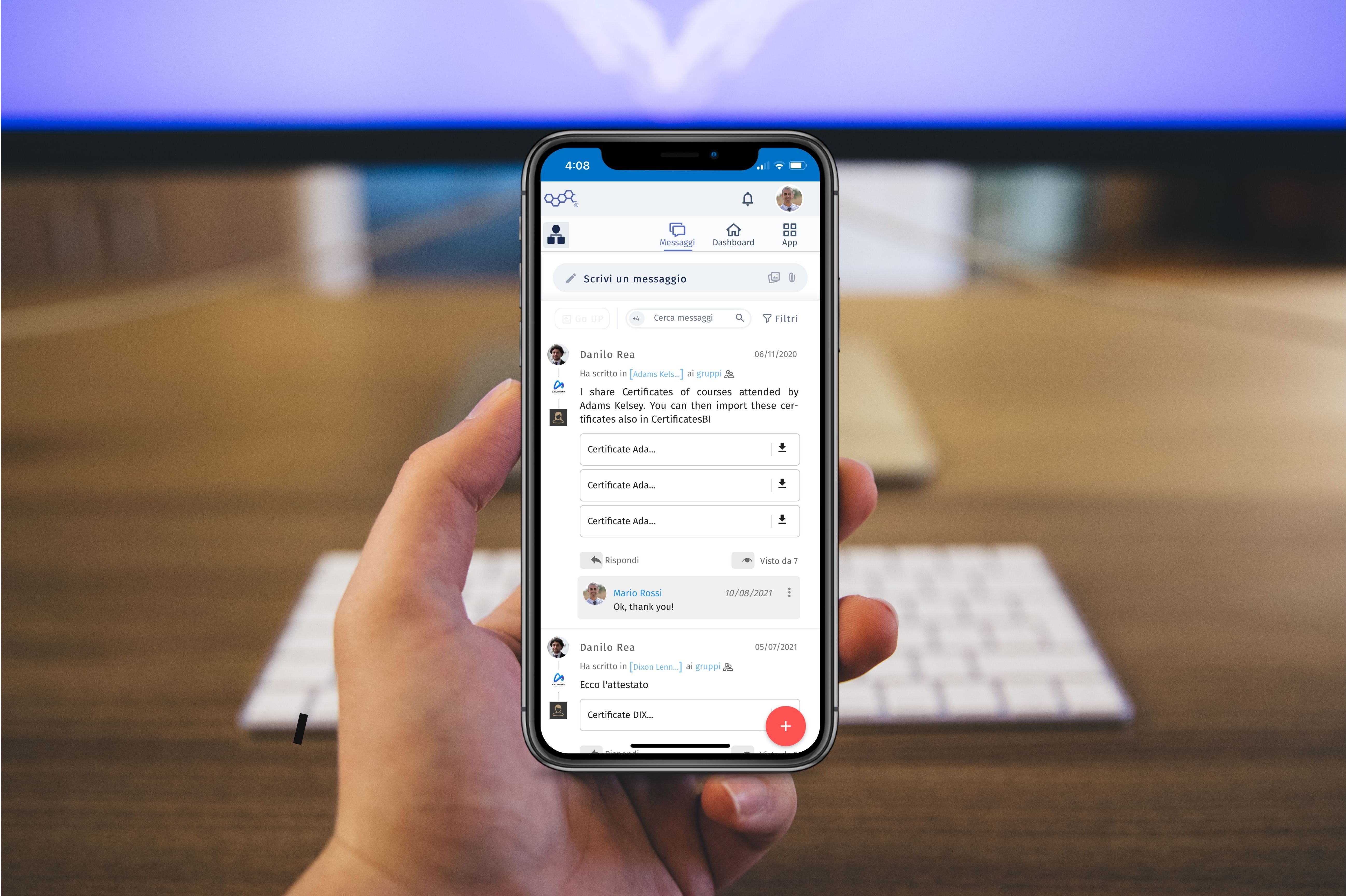
Organisation, digitalisation and smart working: Barney’s version
Organisation, digitalisation and smart working: Barney’s version
From paper to digitalisation, to get to a top down organisational model. How communication and sharing have evolved to interact with virtual and online world, treasuring the most important resources that an organisation possesses: the people.
The invention
I am convinced that the greatest invention in the history of man is paper.*. After graffiti, obviously. The content needed a medium. Leonardo’s paintings are a universal icon for it. Paper – papyrus first and IT support later – has supported and powered all of mankind’s projects throughout its journey of civilisation, it structured their way of thinking, always proving the principle “The land changes the paper. The paper changes the land”.
How does this introduction fits into the theme of the title?
First of all, I need it to explain – maybe to myself – the difficulty of facing the current transformation phase: digitalisation. For the first time in history, paper, an essential tool for men – at least as much as the opposable thumb- is threatened of being abandoned or, at least, of being marginalised and reduced to the secondary kind of things. The switch from paper to digital is a paradigm shift that is not easy to process for either public or private organisations and for individuals.
Paper guides the organisation of companies
And we come to companies, where even the most recent industrial revolution, IT and internet, was supported by paper, often transformed into paper (how many emails do still get printed?) or emulated (as in pdf files). And the organisation of companies is to this day guided by paper: a system of establishment plans, functional charts and job descriptions on paper – all the same if it is on a pdf- defines the roles therefore the responsibilities and the access to IT data. By changing the paper, we change the authorisations to the accesses. Only by deduction from the map of the authorisations to IT accesses would we be able to discover – with a lot of maybes- the establishment plans.
Digitalisation
The digitalisation of companies implies, first and foremost, organisational models conceived and codified in the virtual world, which model themselves on and support the behaviours of people. It is a rev-o-lu-tion. In different terms, if somebody thinks that the digitalisation of the company means modernising the tasks performed on many apps, they are on the wrong track, even though apps must be part of the plan. The paradigm has changed “Reality modifies the virtual. The virtual modifies reality”. The two worlds coexist and interact. The interaction can happen in a harmonious or a chaotic way.
Virtualisation of the organisation
The virtualisation of the organisation needs to be thought of as the construction of a broad, horizontal and omni comprehensive environment of all the stakeholders, interfaced with all the vertical sw: cloud. Here data and information flow without any obstacles, according to the account’s permissions. Possibly, having available with one access all the necessary data to carry out one own’s work and constituting the work environment with colleagues and other representatives. Where the Apps are an addition not the engine, and preferably not cumbersome.
The organisation imagined this way can contain and support, without any kind of differences, work on site as much as from remote (agile work, smart working, emergencies) and foster a sense of community, ever more necessary, complying with business policies.
But only a model such as this can allow the company itself to find the right talents without geographical boundaries. I can refer to companies in Milan that can hire collaborators from any geographical area and decentralised companies from the main job market to “hire” without any logistical surcharge, that is without demanding the change of residence. Naturally, this is also true for the candidates.
Fantasies?
Let’s put our feet back on the ground and see that this is already feasible in economic terms and in terms of time (hours) with the Digital Hive of BusinessRM, a cluster of the collaborative platform SweetHive. The only pre-requisites required:
-
People’s soft skills (open minded, imagination, creativity…);
-
A new cultural code to relaunch which is called “sharing”.
Oh, I nearly forgot, it is a top-down process. So, the first to get involved is the senior management. But this is a different topic and we will talk about it in the next article.
**If you don’t agree, know that you’re not the only one, my son doesn’t agree either. But I stand by my opinion. Until proven otherwise.
Do you want to know about BusinessRM potentiality?
Discover how to rethink your business in an Organisation First perspective.

